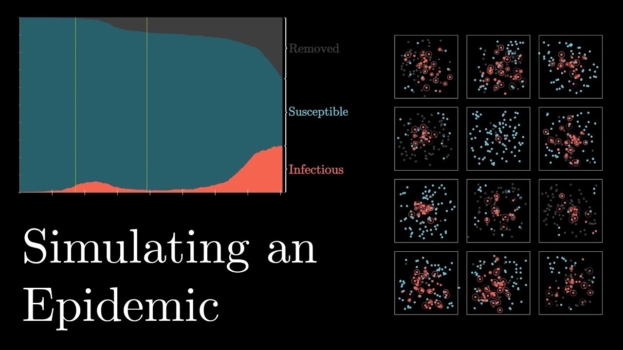This blog was originally posted to facebook on April 2, 2020 and captured quite a bit of interest. Since my facebook account is private, I wanted to make it more widely available.
Hey Peeps…a couple of you reached out to me tonight…including the evening news…with some snarky comments about the government having a hard time getting their models together to so that they could share information with the rest of us.
In a completely apolitical way, I thought this would be a good time to share an entertaining video to give you some idea of why they are so slow. (Really. Whole days. Seriously. I usually need – months…!! I am in awe of what people are pulling off.)
The author (YouTube channel 3Blue1Brown) animates a pretty simple model of how the virus spreads. This is stuff that us rocket scientists like to eat with our breakfast cereal for fun.
The video is longer than what I usually post, but the animations are cool and the results will answer a bunch of pretty practical questions, so I’ve chunked out the highlights below. If you can only watch 5 minutes, start with the last 5 minutes (16:45-20:15 if you must be precise) and then jump back to the beginning.
The big lesson? If we combine segment #1: reduce our tendency to infect others through social distancing, hand washing, and good manners – AND add segment #5: reduce our trips to the grocery store, schools, etc. – we multiply our impact. If we get it wrong, a lot more people will die. The outcome of this really does depend on all of us.
Please be patient with our national leaders. They are trying to give us the best messages they can, and they know how important it is to share the right messages in the right way in order to keep everyone working together.
Stay safe everyone. I hope this helps.
Coles Notes Guide to the animations:
- Short intro – How the model works
- First 5 minutes – #1: Why we are suddenly obsessed with hand washing, social distancing, and exactly how you sneeze.
- 5-10 minutes – #2: Why quarantines are powerful – but only when combined with lots of testing.
- 10-12:30 minutes – #3: Why the Italian Prime Minister wants to buy a flame thrower and our Prime Minister closed all of our National Parks. We really do need everyone to work together if we are going to have the best benefits of social distancing…and we need to do it anyway. It always works.
- 12:30-14:30 – #4: Why isolating communities doesn’t work as well, and (Oops!) why urban centers are hot spots on every single map of cases – just as we might expect.
- 14:30-20:30 – #5: Why Ro is my new best friend. My last post talked about Ro as the daily multiplier on cases and the slope we need to reduce to 1 so that we can lift some restrictions. Today, Ro returns to our channel as the number of people each infected person infects. These two ideas are roughly the same function for the math, you just have to fiddle around a bit with the equations to work it out. This last set of simulations shows that going to central locations together is just not cool! This does not bode well for that rock concert you are hoping to go to in…let’s say May…unless we get a vaccine next week. Here’s the interesting bit: if we were all to go to the grocery store, for example, half as often, Ro drops off dramatically. This is why the Germans, who walk their dogs endlessly, are now confined to their own back yards unless they have a note authorizing them to be on the street. Let’s not go there. Pi would be very sad. Pi thanks you for #socialdistancing




